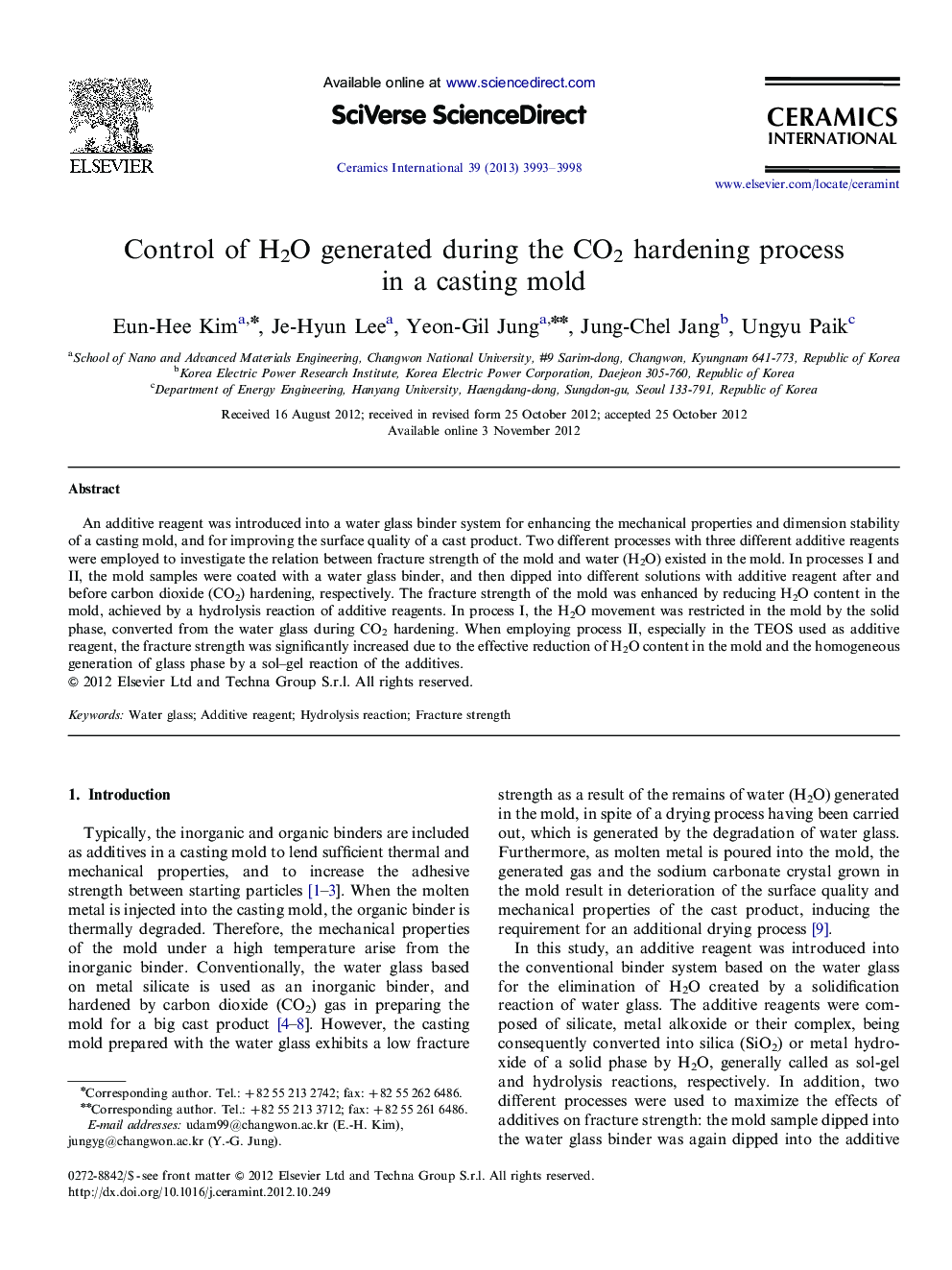| Article ID | Journal | Published Year | Pages | File Type |
|---|---|---|---|---|
| 1461773 | Ceramics International | 2013 | 6 Pages |
An additive reagent was introduced into a water glass binder system for enhancing the mechanical properties and dimension stability of a casting mold, and for improving the surface quality of a cast product. Two different processes with three different additive reagents were employed to investigate the relation between fracture strength of the mold and water (H2O) existed in the mold. In processes I and II, the mold samples were coated with a water glass binder, and then dipped into different solutions with additive reagent after and before carbon dioxide (CO2) hardening, respectively. The fracture strength of the mold was enhanced by reducing H2O content in the mold, achieved by a hydrolysis reaction of additive reagents. In process I, the H2O movement was restricted in the mold by the solid phase, converted from the water glass during CO2 hardening. When employing process II, especially in the TEOS used as additive reagent, the fracture strength was significantly increased due to the effective reduction of H2O content in the mold and the homogeneous generation of glass phase by a sol–gel reaction of the additives.
